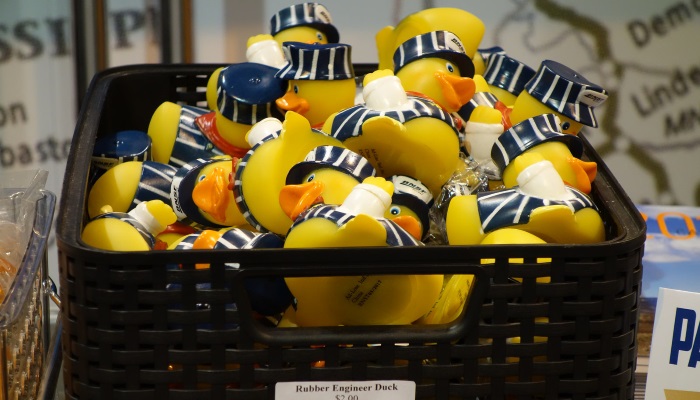
I had many different types of toys. My favourite was Lego. It was kind of cool (and even cooler these days judging by the ever wackier Lego sets you can buy these days). You can create a new toy each day out of Lego. All you needed was some imagination. However, there was always an Achilles heel to anything made of Lego. They couldn’t float, because of the gaps between the plastic*. So how could you solve this problem? I can’t exactly remember but I suspect when I was a kid, I most likely had a similar toy to the one pictured above. As far as toys go, a plastic toy duck is probably one of the simpler ones. It doesn’t really do much, except what you’d expect, float, unlike things made of Lego. Of course, if we wanted to create floating toy, we could buy something much more complicated and expensive. What about a motorised boat complete with flashing lights? Then we’d need batteries and a remote control too. However, if all we want is something that floats, the toy duck is sufficient and we really don’t need to make things complicated. I promise this article is not about floating toys and Lego.
Instead, the article is all about the quant analysis of markets, and trying to find solutions which “float”! We can create many different types of quant models to help us understand markets. If we are creating factors for trading, we’ll probably start with ideas such as trend, maybe carry and then go from there. One thing that I regularly write about, is that simplicity does not need to be a barrier to profitability for a trading strategy. If anything, trying to make things as simple as possible is key to running risk. Unnecessary complexity makes it more difficult to understand what a model is doing. Why for example, is it suggesting we sell EUR/USD, what factor is driving that? The difficulty is that it can be awfully tempting to skip past the long established and simple ideas, and leap into something complex. I’m a big fan of using unusual datasets, and I believe they can offer significant value. However, if we no experience of building a systematic trading strategy, is this the first place I’d jump to? Probably not! After all, price data is probably the most important dataset of all. If we have not really explored using price data, shouldn’t we look at that first, before going into a very exotic dataset?
An important part of creating trading strategies is also combining together different signals using different factors as well. Hence, we might end up mixing more common data for generating signals, with more unusual datasets, such as news. Alternative data is a great resource and indeed Cuemacro produces some alternative datasets. I’ve spent years examining all manner less common datasets. However, before delving into the world of unusual datasets, just remember there are lots of other data sources to look at first, in particular price data, before you make the leap. If you can’t answer a question using a simple dataset, it makes sense to explore some of the more unusual datasets out there. But if price data seems sufficient for our particular model, maybe that’s enough? The same applies to analytical techniques, if a simple moving average works or a linear regression, that’s great.
We don’t need to be using the most fashionable technique of the moment, unless it is strictly necessary and will add value (as opposed to adding complexity). If we are for example trying to analyse text data, we would need to use some different techniques. However, hopefully, you get my general drift. Quant is a great tool for finance, but start simple and then build on that, rather than jumping to the exotic immediately. Furthermore, we shouldn’t throw away everything we know about markets. Instead, we show use new techniques and datasets to help compliment our analysis. Ultimately, we just want something to “float”, just like our toy duck example.
* OK, I admit you could get around this, if you had special very large hull like pieces of Lego – but these were not exactly common place. I’m also trying to ignore cheating with glue to fill gaps…